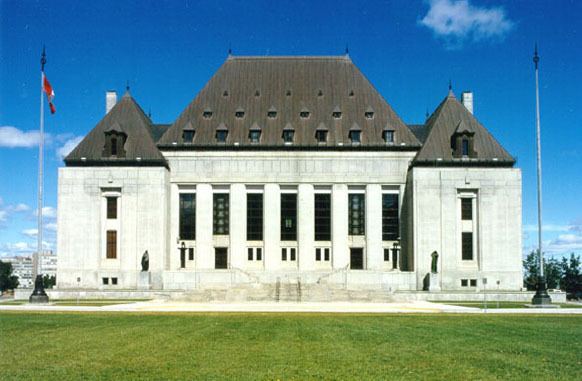Citations 2009 SCC 61 | Concur/dissent Abella. | |
 | ||
Prior history APPEAL and CROSS‑APPEAL from a judgment of the Ontario Court of Appeal (Rosenberg, Feldman and Simmons JJ.A.), Grant v. Torstar Corporation, 2008 ONCA 796, 92 O.R. (3d) 561, 301 D.L.R. (4th) 129, 243 O.A.C. 120, 61 C.C.L.T. (3d) 195, 71 C.P.R. (4th) 352, [2008] O.J. No. 4783 (QL), 2008 CarswellOnt 7155, setting aside a decision of Rivard J. and a jury award and ordering a new trial. People also search for WIC Radio Ltd v Simpson | ||
Grant v Torstar Corp, [2009] 3 S.C.R. 640, 2009 SCC 61, is a 2009 Supreme Court of Canada decision on the defences to the tort of defamation. The Supreme Court ruled that the law of defamation should give way to the rights of a party to speak on matters of public interest, provided the party exercises a certain level of responsibility in verifying the potentially defamatory facts. This decision recognizes a defence of responsible communication on matters of public interest.
Contents
Background
The Toronto Star newspaper published a story concerning the proposed development of a golf course on land owned by Peter Grant, the plaintiff. The stories contained comments from local residents that were critical of Grant, alleging that he was using his political influence to gain permission to build the golf course. In particular, one resident claimed that the decision to allow the golf course was a "done deal". The newspaper contacted Grant for comment, but he declined to comment. The Toronto Star published the article, and Grant sued the newspaper's parent company Torstar Corporation for defamation.
Trial court
The Court did not allow the defence of responsible journalism to go to the jury. As a result, the jury was left to determine whether the Star engaged in 'fair comment'. The instructions to the jury, however, stated that the defendants would be guilty if the comment would not be held by a 'fair minded' person, or alternatively, would be guilty if the defendants held an honest belief in the defamatory statements. The jury found the defendants guilty of libel, and awarded general, aggravated, and punitive damages in the amount of $1.475 million.
Ontario Court of Appeal
Torstar appealed to the Ontario Court of Appeal. On the issue of responsible journalism, the Court of Appeal found that the trial court erred in not allowing the jury to consider the defence, and remanded the case for a new trial. The Court also found that the idea of a 'fair minded' person would need to believe in a comment was previously rejected by the court, thus the trial court did not properly instruct the jury on this issue. Finally, the Court found that the defamatory comments in the article were attributed to a resident, and unless the defendants had adopted them as their own, the defendants' 'honest belief' in them was irrelevant.
Supreme Court ruling
Grant appealed to the Supreme Court. The court dismissed the appeal and the cross-appeal, with only Justice Abella dissenting in part from the decision.
The Court first recognized that the tort of defamation places limits on Freedom of Expression guaranteed under s. 2(b) of the Charter of Rights and Freedoms, but that limit should not go as far as to place a 'chill' on expression.
It then determined that four issues needed to be resolved:
- Should the common law provide a defence based on responsible communication in the public interest?
- If so, what are the elements of the new defence?
- If so, what procedures should apply? In particular, what are the respective roles of the judge and jury?
- Application to the case at bar
- Fair comment
- Responsible communication
Responsible communication defence
Speaking for the majority, Chief Justice McLachlin found that the defence should exist so as to not restrict speech. She found that the defence helped to strike the proper balance between rights of free expression, as protected in the Charter, and the rights of privacy and protection of reputation. She also found justification in the ruling supported by the emerging recognition given to the defence in other common law states.
Elements of the defence
First, McLachlin stated that the defence of responsible communication was a new defence, and not a modification of qualified privilege. She then ruled that defence should be known as 'responsible communication', as it is not only journalists who should benefit from the defence, but bloggers and other people who disseminate information regardless of their status in established media.
McLachlin found that two conditions must be met for the defence of responsible communication to apply:
In determining whether the defendant acted responsibly, she found a court should consider:
She noted that this list was not exhaustive, but served merely as a guideline. A court is free to consider other factors as well. As well, the factors should not all be given equal weight.
Roles of judge and jury
McLachlin ruled that the judge is to determine whether the matter is one of public interest. Recognizing that this may involve factual determination, she nonetheless ruled that the judge was serving as a sort of 'gatekeeper' in determining whether the defence should be allowed.
The jury was left the role to determine whether a particular defamatory statement was needed to determine whether a defendant acted responsibly when he published it.
Application
McLachlin ruled that the three defences of justification, fair comment, and responsible communication should have been left to a jury. As a result, she remanded the case for a new trial.
Dissent
Justice Abella concurred in part and dissented in part. She agreed with the majority ruling that a defence of 'responsible communication' should be available in Canadian defamation law. She dissented, however, as to the division of roles between the judge and the jury. In her opinion, the inquiry as to the availability of the defence was for the judge alone.
